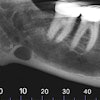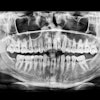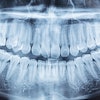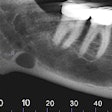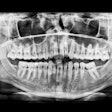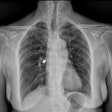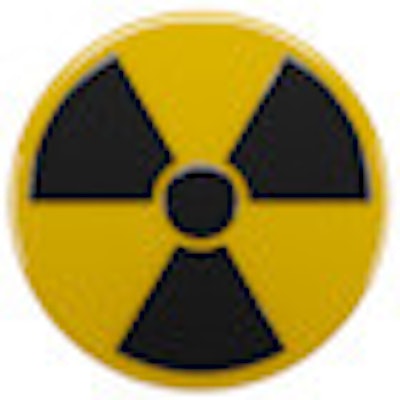
Can antioxidants already present in the human diet protect against genotoxic damage induced by exposure to x-rays? That's the contention of the authors of a new study in Dentomaxillofacial Radiology (July 2011, Vol. 40:5, pp. 310-314).
In developing countries, the number of radiological exams and the number of professionally exposed workers have both steadily increased in recent years, suggesting that an effort should be made to minimize the radiation doses administered, noted the study authors, all from the University of Murcia in Spain. While shielding, increased distance from the radiation source, and reduced exposure times have been shown to be useful, "they have serious limitations in clinical practice," they added.
“New strategies for biological protection are needed. ...”
— Miguel Alcaraz, MD, PhD, lead study
author, and colleagues
"For this reason, new strategies for biological protection are needed to improve the efficacy of current efforts in reducing biological damage," they wrote.
So the research team decided to analyze and compare antioxidant compounds already present in food to determine what sort of antimutagenic protective abilities they might have against the chromosome damage induced by ionizing radiation. They assessed 10 compounds using the lymphocyte cytokinesis-block micronucleus (MN) cytome test:
- Amifostine -- belongs to a class of drugs known as chemoprotectants that are used to protect against the harmful effects of radiation treatment in cancer patients
- Apigenin -- a nonmutagenic bioflavonoid found in leafy plants and vegetables such as parsley, artichokes, basil, and celery
- Carnosic acid -- a potent antioxidant found in rosemary
- d-tocopherol -- a chemical compound and common food additive with vitamin E activity
- Dimethyl sulfoxide -- an organosulfur compound used in medicine as a topical analgesic, an anti-inflammatory, and an antioxidant
- Diosmin -- a flavonoid with anti-inflammatory properties that can be isolated from various plant sources and is used in the treatment of venous diseases
- Green tea extract
- L-ascorbic acid -- a naturally occurring organic compound with antioxidant properties
- Rosmarinic acid -- a natural phenol antioxidant carboxylic acid found in many herbs, including lemon balm, rosemary, oregano, sage, thyme, and peppermint
- Rutin -- a citrus flavonoid glycoside found in buckwheat, rhubarb, asparagus, certain citrus fruit rinds, and some berries, including cranberries
The researchers obtained human blood samples from two healthy, young, nonsmoking female donors. The carnosic acid, d-tocopherol, rutin, and diosmin were dissolved in 5% aqueous dimethyl sulfoxide (DMSO), while the L-ascorbic acid, green tea extract, apigenin, amifostine, and rosmarinic acid were dissolved in water. The researchers then added 20 µL of these solutions to 2 mL of human blood to obtain a 25 µM concentration five minutes prior to irradiation.
The samples were then exposed to x-rays from an Andrex Smart 200E system (Yxlon International) operating at 120 kV and 4.5 mA, with a focus-object distance of 74.5 cm at room temperature for 19 minutes and 29 seconds. The dose rate was 103 mGy/min to a total dose of 2 Gy ± 3%. The researchers then carried out the MN assessment on the irradiated lymphocytes, analyzing triplicate cultures for each substance.
Encouraging results
In previous research, the researchers used the MN test to evaluate the protection capacity of several antioxidant compounds against gamma radiation and found that some pure flavonoids such as diosmin and rutin and polyphenolic extracts demonstrate greater protective capacity than traditional radioprotectors -- such as sulfhydryl compounds and vitamin C -- against x-rays in vivo (Journal of Medicinal Food, September 2002, Vol. 5:3, pp. 125-135).
They have also done extensive research into the photo-protective characteristics of individual compounds such as rosmarinic acid (Food and Chemical Toxicology, February 2009, Vol. 47:2, pp. 386-392) and citrus flavonoids (Current Cancer Drug Targets, December 2007, Vol. 7:8, pp. 795-809).
The results of the current study lend further support to their previous work. The researchers found the reduction in genotoxic damage with the radiation doses administered reached 58%, which represents "a significant reduction" in x-ray-induced chromosomal damage (p < 0.001).
Specifically, the protective capacity of the 10 antioxidant substances they tested are listed below -- from highest to lowest according to the frequency of the MN generated by x-ray exposure:
- Rosmarinic acid
- Carnosic acid
- d-tocopherol
- L-acid ascorbic
- Apigenin
- Amifostine
- Green tea extract
- Diosmin
- Rutin
- Dimetyl sulfoxide
"It is possible to select nontoxic, water-soluble antioxidants that show great bioavailability and that may be common components of the human diet to reduce the genotoxic effect induced by the radiation about to be applied," the authors wrote. "The possibility of using such compounds before carrying out diagnostic explorations with ionizing radiation and of increasing the levels of antioxidants in the organism of PEW [professionally exposed workers] in an attempt to reduce the harmful effect of radiation represents a new strategy for reducing the biological damage to ALARA [as low as reasonably achievable] levels at the present time."
However, while intriguing, this research is still in the early stages and the findings should be evaluated with caution, noted Stuart White, DDS, PhD, former chair of the oral radiology department at the University of California, Los Angeles School of Dentistry.
"Alcaraz and colleagues have reported that exposing cultured lymphocytes to 2 Gy of radiation more than doubles the rate of formation of micronuclei (a form of chromosomal damage) compared to unexposed cultures," he wrote in an email to DrBicuspid.com. "The administration of various antioxidants to the culture media prior to exposure reduces the number of micronuclei in exposed cells, in some cases almost down to control levels. This is an interesting finding because diagnostic radiographic examinations are elective, and these results offer the possibility that such radioprotective agents may be administered before exposure to reduce the radiation risks."
In fact, the researchers concluded that "the use of antioxidant, nontoxic substances that form part of the normal human diet may offer protection against the biological damaged induced by ionizing radiation."
But they leave many key questions unanswered, Dr. White noted. For example:
The exposures in this study were 2,000 microGy while the typical entrance exposure for a single dental radiograph is on the order of 1.5 microGy. Should the conclusions and recommendations be extrapolated to a dose about 0.1% of that studied?
Do antioxidants reduce cancer risk -- with or without radiation?
What are the side effects of administering antioxidants at systemic levels high enough to reduce radiation-induced micronuclei?
Would the administration of antioxidants prior to a scheduled x-ray examination reduce the appropriate caution that every clinician and patient should have regarding elective exposure to radiation?
Would patients prescribed a substance prior to an x-ray examination inappropriately believe that they are now protected from the potentially harmful effects of radiation?
Would clinicians inappropriately believe that scientific studies have shown that these agents protect against the risks of diagnostic exposures?
"The fact that there are many unknowns should encourage further research along this interesting line," he stated. "Having an agent that would truly reduce the risks of x-ray exposure would be wonderful. However, these many unknowns should also prompt caution in making premature leaps from the 'test tube' to the patient. By all means continue this line of research, but it is premature -- and potentially counterproductive -- to provide patients with such compounds."
